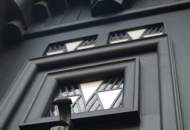News
Stamp duty tax take rises as house prices increase
05 November 2015
Official figures show that house prices in England have risen considerably faster than in the rest of the United Kingdom in the past year.
House prices increased by 5.6 per cent in England, 0.8 per cent in Wales, 2.9 per cent in Northern Ireland and fell 0.9 per cent in Scotland, according to figures from the Office for National Statistics (ONS).
In London, prices increased by 4.2 per cent in the 12 months to August, while in the North West and Yorkshire and the Humber they increased by 4.7 per cent and 4.8 per cent respectively.
As a result, HM Revenue & Customs (HMRC) collected £7.5 billion in stamp duty from residential property transactions in 2014/2015; a rise of 165 per cent over the previous six years. Between 2008/2009 and 2014/2015, stamp duty revenues in London have grown by 248 per cent, compared to around 158 per cent in the East of England and 140 per cent in the South East. Other English regions had between 75 per cent and 120 per cent growth in the same period. This year, transactions in London have contributed just over £3 billion, followed by the South East at £1.6 billion. Together, these two regions accounted for 66 per cent of the total 2014/2015 tax take.
The increase in London reflects the growth in house prices in the capital over this time compared to the rest of the country, as well as the fact that the higher rates of stamp duty on property transactions worth more than £1 million largely affect London, according to estate agent firm Knight Frank.
Grainne Gilmore, Head of UK Residential Research at Knight Frank, pointed out that last December’s cuts in stamp duty for homes worth up to £1.1 million has had little impact on the tax receipts from home buyers in the year to April. “Overall, home buyers still paid more in stamp duty than over the previous 12 months. While the increased take from stamp duty reflects the growth in house prices and a pick-up in transactions, another factor has been the increases to stamp duty charges, especially towards the top end of the market.
“It remains to be seen what the impact of the new stamp duty regime will be for the Treasury in the coming year. Despite hitting a record high for residential receipts in the year to 2015, the total stamp duty tax take at £10.7 billion is £800 million lower than the Treasury forecast when it made the changes to stamp duty back in December,” she added.
The number of transactions for £3.3 million-plus homes has fallen by 25 per cent in the first seven months of 2015 compared with a year earlier, according to separate figures by Knight Frank.
Case Studies
-

A shared passion for architecture and a head for numbers
-

Sometimes a business does exactly as it says on the tin
-

Customer care is top of the list for packaging business
-

Smiles all round for dental practice
-

Taxing demands with old school charm
-

A taste for growth, a thirst for knowledge
-
Child's play with proactive accounts management
-

Cut above the rest in personal management style
-

A modern approach required for music moguls


